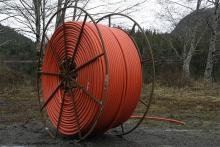Pandemic Changes Pace of Federal Funding for Broadband Deployment
Like most other aspects of life, the ongoing pandemic has disrupted the federal government’s plans to disburse grants, loans, and subsidies for the construction of rural broadband networks. But unlike the sporting events and concerts that can be put on an indefinite hold, these funds are now needed more than ever by the Internet access providers trying to connect rural households during a time when everything has moved online. Federal agencies, like the Federal Communications Commission (FCC) and the US Department of Agriculture (USDA), must find ways to manage the challenges caused by the spread of the novel coronavirus and to leverage their funds to support essential networks for families stuck at home.
These agencies’ main rural broadband programs — the FCC’s Rural Digital Opportunity Fund (RDOF) and USDA’s ReConnect — are at different stages, both in their funding cycles and in their response to the Covid-19 outbreak. The pandemic has already led to changes at the USDA, which has extended the ReConnect application deadline and is set to receive additional funds from Congress. Meanwhile, the FCC has yet to alter the upcoming RDOF subsidy auction, but it could speed up the process to address the current crisis, which threatens to linger through the summer.
While more must be done to address the many digital divides exacerbated by the pandemic, federal agencies should at least use existing programs to their full advantage to connect rural Americans during this unprecedented time.
ReConnect Extends and Expands



